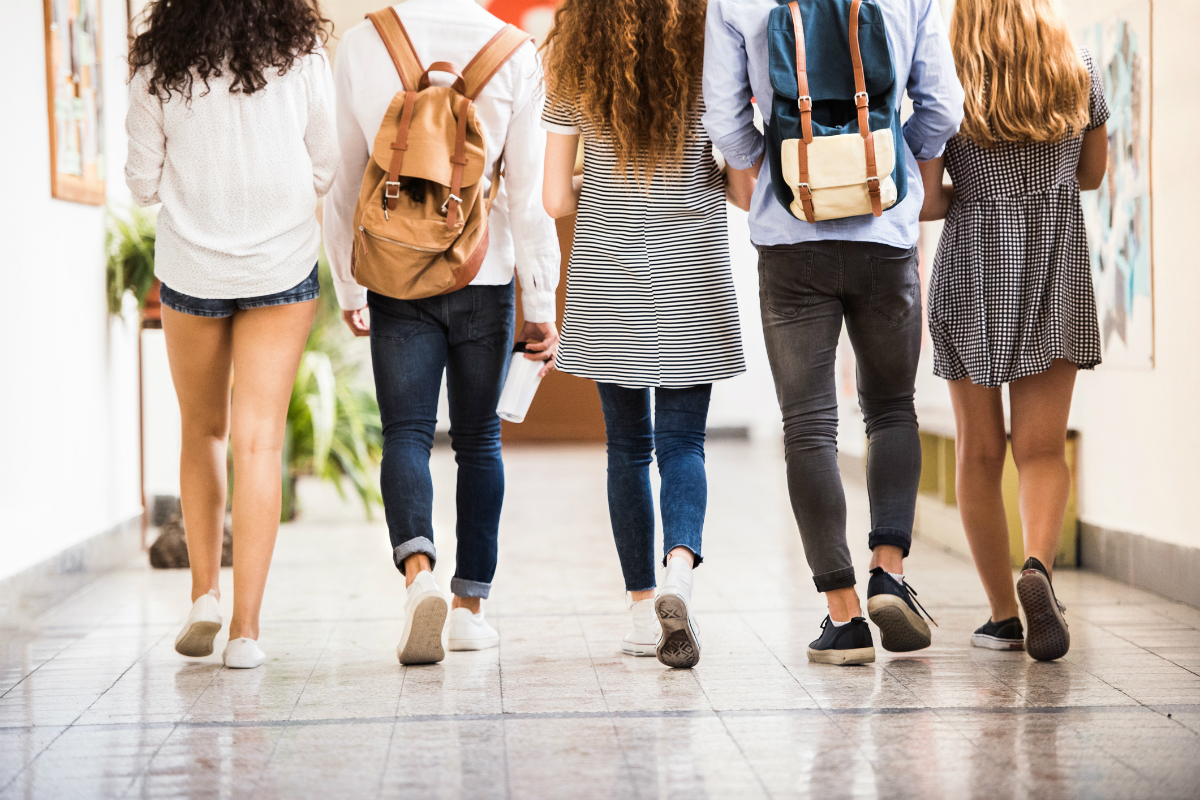With hospitalizations on the decline and more than 20 million vaccine doses administered, Gov. Gavin Newsom announced California’s next steps in recovering from the COVID-19 pandemic on April 6.
If vaccine supply is sufficient for all residents 16 and older who wish to be inoculated and hospitalization rates are low and stable, the economy will fully reopen June 15, according to Newsom.
At that point, the “Blueprint for a Safer Economy” and color-coded tier-system would end but preventive measures like wearing masks, testing and contact tracing would still be in place for the foreseeable future as vaccinations continue to take place.
Beyond the Blueprint, “schools and institutions of higher education should conduct full-time, in-person instruction, in compliance with Cal/OSHA emergency temporary standards and public health guidelines,” according to the California Department of Public Health.
“I want kids back in-person, I want kids back in school safely … On June 15 we anticipate there will be no barrier to getting all our kids safely back,” Newsom said.
State Superintendent of Public Instruction Tony Thurmond commented on the news, saying, “I share Governor Newsom’s optimism that as conditions continue to improve — and as all Californians continue common-sense measures such as continuing to wear a mask and getting vaccinated — there is a clear pathway to a safe and full return to in-person teaching and learning this fall.”
Returning to campuses
Prior to the announcement, ways to safely reopen campuses were discussed at a March webinar hosted by the California Department of Education. Panelists shared information on implementing COVID-19 testing and available resources for ventilation upgrades.
“We’re at a pivotal moment for our schools with 9,000 schools in our state either open or preparing to open,” Thurmond said at the time. “There’s still lots of questions on how to do this. We’re grateful to see that some 400,000 or more educators have received the vaccine, but until everyone has, we know that there are questions about how we get our schools open and how we keep them open safely. We want to follow the science.”
More information on how interested districts can pursue testing is available on California Coronavirus Testing Task Force website.
All Californians age 16 and over will become eligible for the vaccine beginning April 15. Vaccine availability as well as testing continue to play an important role in a safe return to in-person learning, Thurmond said, noting that millions of BianaxNOW rapid COVID tests are now being deployed — many to districts in areas hardest hit by the pandemic and who serve high-risk households.
Napa Valley Unified School District Superintendent Dr. Rosanna Mucetti said the district’s 28 campuses have been open since fall while continuing to offer distance learning. The district is using a four-phase reopening plan, but Mucetti recognized that others will likely not as the school year ends soon.
Giving advice to local educational agencies that are looking to go in-person, Mucetti said testing operational systems in the first few weeks will be imperative. “Until you test the system the pressure is not there,” Mucetti said. “You just have to expect that in your first couple weeks you’ll have to engage in some revision and refinement of your work … The coordination between your building and district leaders to refine those systems and that schools are executing in standardized way in order to ensure safety is critical.”
Communicating with the community and offering full transparency are two ways Napa Valley USD has maintained trust with the public. On its website, there is a COVID case tracking system updated on a weekly basis. “We never got much higher than 1 percent of our nearly 2,000 employees and 17,000 students combined virtual and in person that got COVID,” Mucetti said. “What it shows is that if you use the mitigation strategies, if you train your system, if you standardize across your system that you can control transmission on your campuses.”
Ventilation and funding resources
Proper ventilation is another component in reducing the risk of transmission and maintaining healthy facilities. Good ventilation rates are associated with increased student performance, improved respiratory health, increased student attendance and decreased airborne disease transmission, according to Chris Ruch of the National Energy Management Institution (NEMI).
Referencing a 2019 report from the University of California, Davis and Lawrence Berkeley Nation Labs on improving indoor air quality at schools, Ruch said the lesson learned was that it’s not only about ordering a unit, but also having someone certified to install and maintain it.
An update to the U.S. Department of Education’s Strategies for Safely Reopening Elementary and Secondary Schools suggests conducting assessments or audits of existing ventilation systems and developing a ventilation improvement plan. Ruch presented a plan by NEMI and the UC Davis Energy and Efficiency Institute, similar to Assembly Bill 841, that “would prepare schools for reopening during the COVID-19 crisis and provide lasting improvements in indoor air quality.”
AB 841 created the School Energy Efficiency Stimulus Program, which includes two new grant programs: the School Reopening Ventilation and Energy Efficiency Verification and Repair Program and the School Noncompliant Plumbing Fixture and Appliance Program.
Funds are derived from investor-owned utilities energy efficiency rolling portfolio funds. The estimated budget for 2021 is $275 million; the overall budget over three years is estimated at $700 million, with 75 percent for the ventilation program and 25 percent for the plumbing/appliance program, said Natalie Lee of the California Energy Commission. Money must be spent in the utility areas it derived from. Those include Pacific Gas & Electric, Southern California Edison, San Diego Gas & Electric and Southern California Gas.
Find additional information about AB 841 on the Energy Commission’s website.





